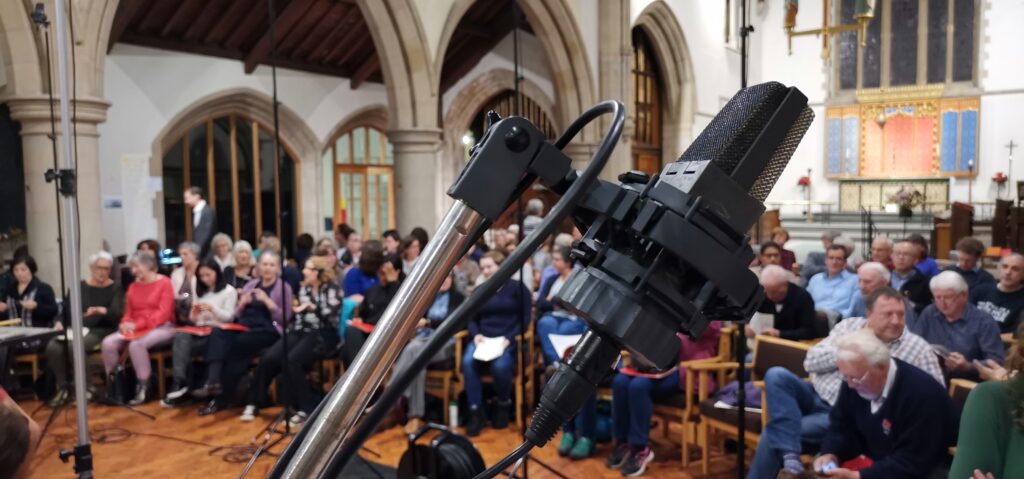We are proud of our recordings, and of the excellent reputation we enjoy among recording artists and musicians – we are always fully prepared, both in terms of the work to be recorded and the procedure and discipline required in a recording studio. We hope our recordings capture the joy we experienced in making them. All were rewarding collaborations with a range of talented and passionate musicians. Buying one or more of our recordings is a splendid way of supporting the Chorus. Happy listening!
- Anthems, Hymns and Gloria for Brass Band
- Paradise with Black Dyke Band
- Awake Arise – Yorkshire carols for brass and voices
- The Holy Face
- Black Dyke Live – Armed Man, a Mass for Peace
- Chandos recordings
- Dream of Gerontius
- Old recordings
You may also be interested in purchasing books about the Chorus. Dr Bill Smyllie’s history of the Chorus was written to celebrate our 75th anniversary, while Dr Chris Wiltshire’s compilation of young soprano May Midgley’s letters provides a unique and lively insight into the choir’s world tour of 1911.
- Letters of May Midgley 1911 by Dr Christopher Wiltshire
- History of the Chorus by Dr William Smyllie
In June 2020, during the coronavirus lock-down, our Music Director Darius Battiwalla produced brass arrangements of some movements from Handel’s Messiah that hadn’t up to then been arranged for brass band accompaniment. He did this in preparation for our performance of Messiah with the world-famous Black Dyke Band, originally scheduled for 2020 but which had to be postponed until April 2022.
The Sheffield Choir from which our Chorus was formed, made a number of recordings in the 1920s. Music enthusiast and antique gramophone enthusiast Graham Rankin has kindly captured these on YouTube and you can listen to them using the links below. We are very grateful to Graham for making these recordings on his wonderful old gramophone.
The HMV recordings made in 1921 were acoustically achieved without the aid of microphones. The 1928 recordings, by Columbia, would have been electrically achieved as this became the standard method in 1926.

